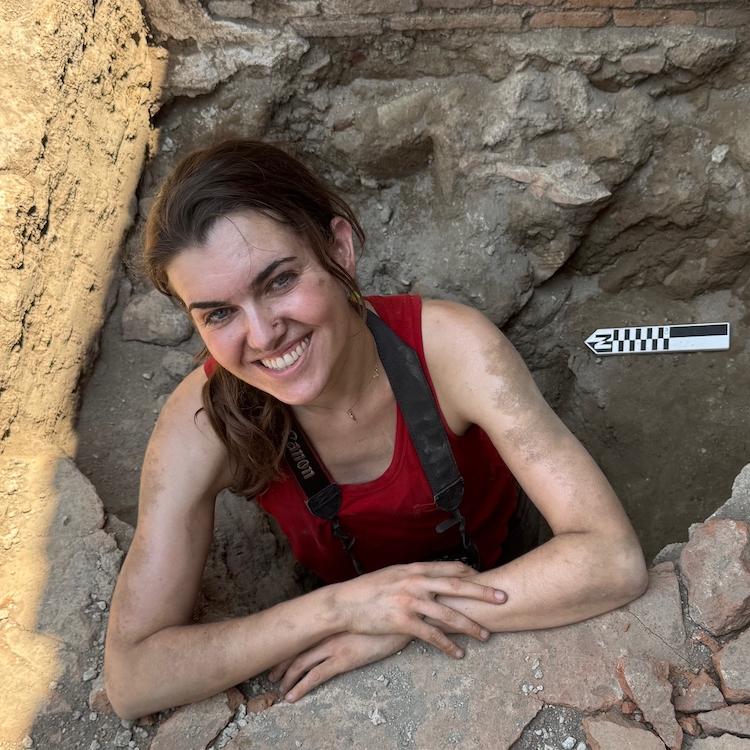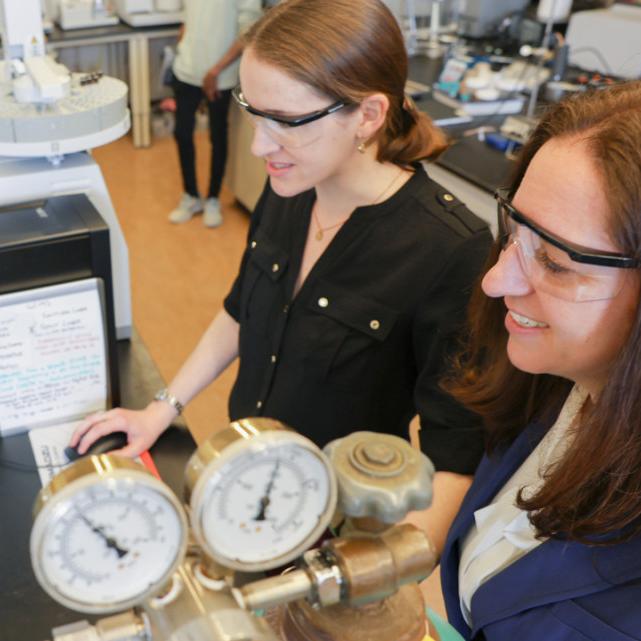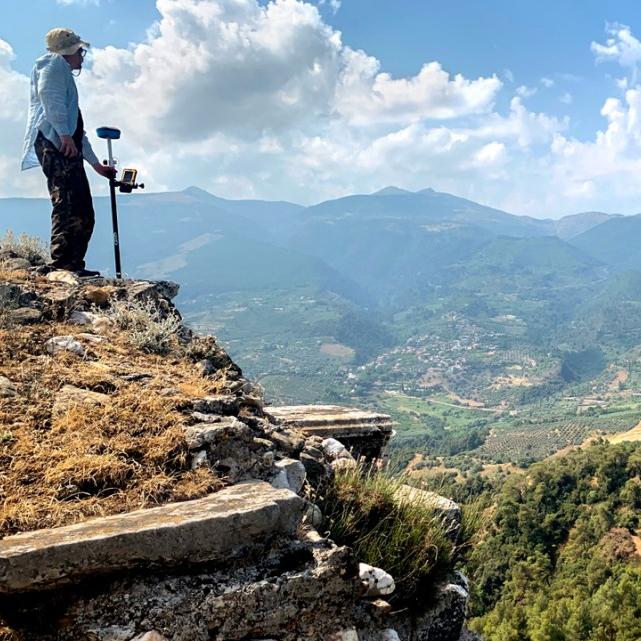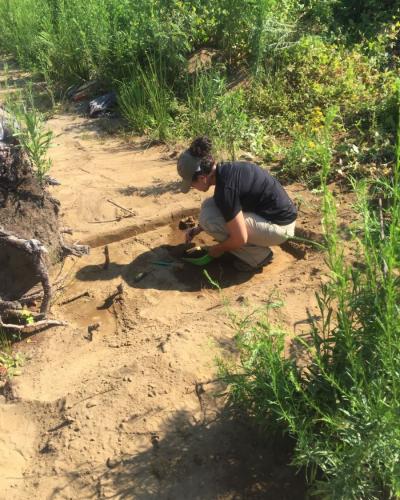Georgia, located in the Caucasus region on the eastern coast of the Black Sea, is not often considered within the geographical reach of the Classical world in Anglo-American scholarly traditions. Moreover, Georgia occupies the arbitrary border between ‘Europe’ and ‘Asia,’ often resulting in the study of the area being split between disciplines or even neglected. However, this is precisely what draws Ruth to Georgia, a place with intense interaction and negotiation between a variety of groups and cultures throughout history.
Rather than viewing the Classical world as bounded and centered on the Mediterranean, Ruth joins other voices to advocate for the expansion of these boundaries. Sites on the periphery of what we consider Classical civilization uniquely inform our views on cultural negotiation and the multivalent connections between various settlements. Additionally, these under-studied areas provide ample opportunity to ask new theoretical questions about the Classical world and explore new sites. However, Ruth’s goal during this trip was not only to do field work at sites like Pichvnari, which she has long studied, but also to experience and understand the country’s culture and local politics. As Ruth states, “...it’s amazing how what you’ve been reading about for several years clicks once you’re physically there.” Learning from and networking with Georgian archaeologists and archaeologists who work in Georgia, experiencing the different landscapes, and understanding the diversity of ongoing research in Georgia were among Ruth’s main goals in addition to excavation and learning modern archaeology methods. Further, cultural politics play a critical role in determining how archaeologists may conduct their research, and understanding local political developments is vital. Thus, after years of reading about Georgian archaeology, Ruth organized a two-month trip to research and explore the area with the support of CIAMS and the Mario Einaudi Center for International Studies.
While in Georgia, Ruth participated in two archaeology projects that were located in different areas of the country and utilized varying research methods. The first excavation Ruth participated in was at Pichvnari, an ancient settlement thought to have been inhabited by Greeks and locals in Western Georgia–ancient Colchis, located within the autonomous Republic Adjara. Pichvnari contains three large necropoleis dating from the 5th-1st c. BCE (and evidence of later reuse in the 3rd-7th c. CE) that have been excavated since the 1960s. Ruth excavated with Emzar Kakhidze, Head of the Batumi Archaeological Museum and Associate Professor of the Department of History, Archaeology, and Ethnology at Batumi State University. Due to the sandy dirt and humid climate of this region, very little organic material remains in the graves at this necropolis. However, other finds such as pottery, coffin nails, jewelry, and vital site information are still recoverable.
The second project Ruth participated in was at a Late Bronze-Early Iron Age site in Kvemo Kartli, Eastern Georgia, called Dmanisis Gora. The project, called Archaeological Research in Kvemo Kartli (Project ARKK), is a field and laboratory initiative in collaboration with the Georgian National Museum. The project is led by Dr. Nathaniel Erb-Satullo, a lecturer in Archaeological Science at the Cranfield Forensic Institute, and Dimitri Jachvliani, a Svan archaeologist. Since excavation permits were long delayed due to recent shifts in Georgian politics, the team was able to conduct a full month of drone survey work and take orthographic photos of the entire site. They were additionally able to survey various sites in the area that Dr. Erb-Satullo had chosen from satellite photos to further current understandings about settlement distribution in the area. Academically, Ruth is reconsidering the different approaches which have been applied to excavation in Georgia previously. There is an abundance of legacy and new data to revisit using modern theory and methods. Moreover, the Classical-period scholarship in Georgia has often been divided between areas under ‘Greek influence’ (west/the coast of Georgia) or ‘Persian influence’ (eastern Georgia). However, Ruth believes that this scholarly divide obscures a holistic reading of the area and fails to appreciate the complexity of cultural interaction. In addition to the Greek colonists, there were nomadic, semi-nomadic, and sedentary groups in Georgia that interacted with foreign settlements and neighboring regions. Thus, it is important to understand what life was like before foreign groups arrived in order to understand how and why life changed once they got there. Ruth wants to focus more on how Greek colonization fits into wider changes of the 1st millennium BCE, rather than centering the Greeks.
These research questions and priorities fit into larger changes occurring in Classics which aims to broaden the discipline’s reach and re-center areas and populations which have been neglected academically in the past. As Ruth states, “This is where Classics in the US is going, and the reason I am able to study what I study is because of that trend. I am excited to see where it continues and am lucky to have the opportunity at Cornell to do so, as well as the support of archaeologists working in Georgia.” Ruth’s work and outlook on Classics is truly original and unique; she is formulating a dissertation this year based on the knowledge she has gathered in Georgia. We all wish her the best of luck, and her fellow grads are happy to have her back!






